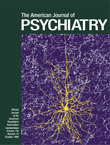To the Editor: We appreciate the interest and careful work of Margot Albus, M.D., Ph.D., and Werner Hubmann, M.D., on sex differences in neuropsychological functioning in schizophrenia. We have previously argued, consistent with their thinking, that the size and significance of sex effects in schizophrenia are highly dependent on methodological issues such as sampling, matching, and diagnostic criteria. However, we disagree with Drs. Albus and Hubmann regarding how one’s group should be matched to examine sex differences or group differences in neuropsychological or brain abnormalities in schizophrenic and normal subjects. The key issue is separating illness effects from presumed pre-illness characteristics, reflected in whether to match for the patients’ IQ or education or both. However, controlling for IQ or education, known to account for substantial variance in other neuropsychological measures, may remove variance directly attributable to the independent variables of interest—i.e., schizophrenia or sex
(1–
3). This is known as the matching fallacy
(3), in which participants are overmatched on a variable that is not independent of the illness per se, such as IQ or education.
Thus, one should match subjects according to socioeconomic or educational status. If, as with schizophrenia, we are studying a neurodevelopmental disorder—i.e., one in which the natural history of the illness has pre- or perinatal origins—then the patients’ education and IQ are already affected by the illness. Thus, matching subjects according to patients’ education or IQ, pairwise or proportionately by group, would essentially adjust for an illness effect, thus overmatching—attenuating differences among groups. This may be particularly problematic in studies of sex differences, since we and others have shown sex differences in premorbid histories in schizophrenia—i.e., suggesting early differential illness effects
(4). Single-word reading is less affected by the illness than education or IQ
(1,
2). Thus, we conducted additional analyses controlling for reading and still found significant sex effects, thus underscoring the validity of the findings in our article.
Finally, regarding our analytic approach, as stated in the article, we did not have the statistical power to adequately test for an overall sex-by-group interaction using a multivariate F test. This does not invalidate our findings, which were reported as effect sizes. The two-to-eightfold effect sizes, in table 3 of our article, clearly showed differences not only within sex (comparing patients and normal subjects) but between sexes (within the group). Furthermore, if our results were solely an education effect rather than a sex effect, we should have reported sex effects for all neuropsychological domains for which Drs. Albus and Hubmann and colleagues report that education had a significant effect (table 4 in their 1997 study). This was not the case.
Although we disagree with the matching procedure used by Drs. Albus and Hubmann, we believe that the topic of sex differences in neuropsychological functioning needs further investigation. It is still unclear which aspects of neuropsychological functions differ in men and women with schizophrenia. Identification of these differences can provide clues to understanding the impact of one’s sex on brain abnormalities in schizophrenia.

